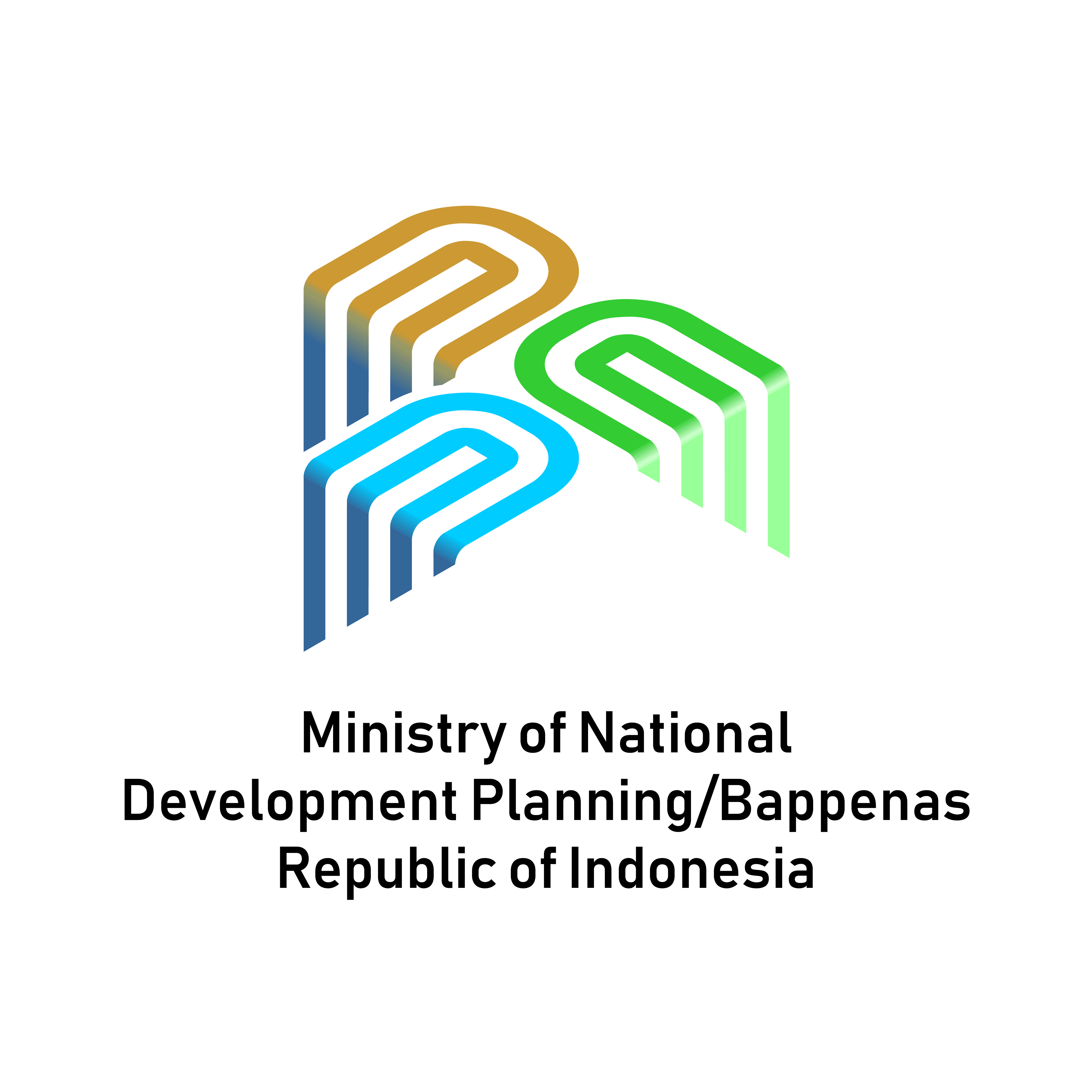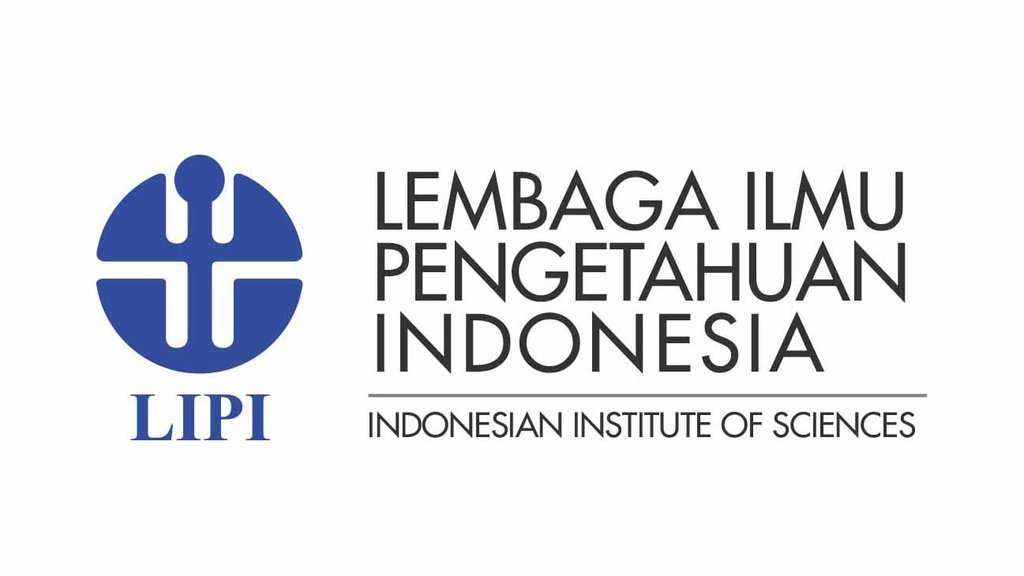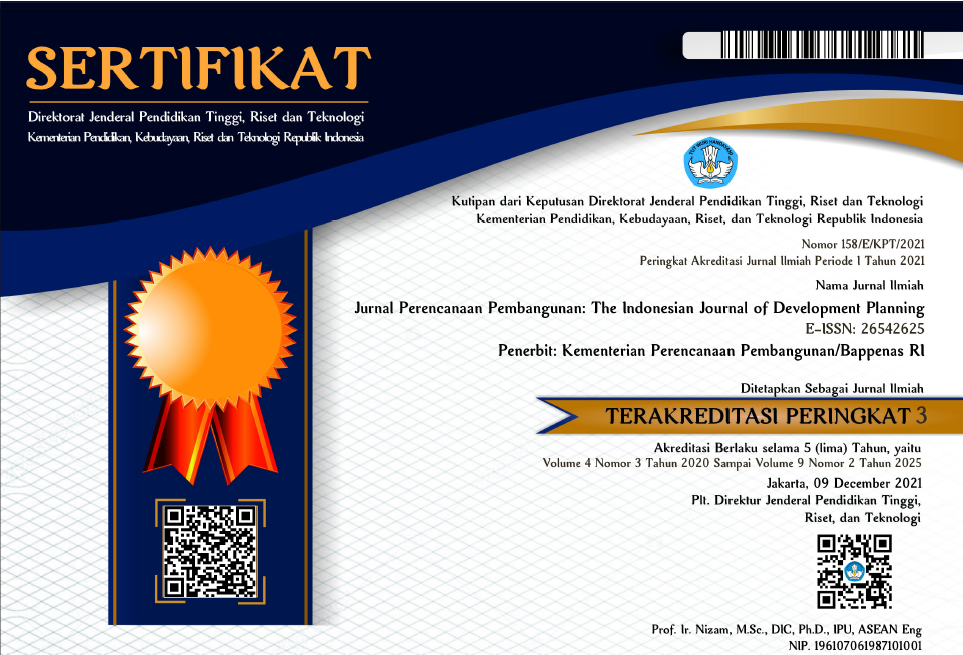Human Resources of Research and Innovation in Indonesia: Reality, Policy Strategy, and Roadmap
DOI:
https://doi.org/10.36574/jpp.v6i3.365Keywords:
human resources of research and innovation, policy strategy, policy research, history of scienceAbstract
This article reveals the reality, policy strategies, and roadmap plans for human resource development in Indonesia's research and innovation field. The result of human resources in a lot of research and innovation is an important one, especially after the government's commitment through the issuance of Presidential Regulation Number 18 of 2020 concerning the National Medium-Term Development Plan (RPJMN) for 2020-2024 and also the Presidential Decree of the Republic of Indonesia Number 21 of the Year 2021 concerning the National Talent Management Task Force, where research and innovation are one of the sectors developed in national talent management. This study uses a qualitative method with a descriptive approach. The investigation resulted in four aspects of concern, namely the existing conditions and the Indonesian government's experience in developing human resources in the field of research and innovation, which had been initiated since the era of President Soekarno, then the presence of a scholarship program created by Prof. Eng. BJ Habibie, who at that time served as Minister of State for Research and Technology by providing scholarships to more than 1,500 people during 1982-1996 to study in several countries which would later become talents for the national strategic industry and research and development institutions in Indonesia. The results of talent management policy mapping in the research and innovation sector are discussed in the next section. To enrich understanding, a comparative study of talent management and policy was carried out in Japan, the Philippines, and Malaysia. In the end, a proposed strategy and roadmap for implementing research talent and innovation in Indonesia are presented.
Downloads
References
Akoum, I. (2016). Research, Development, and Innovation in Malaysia: Elements of an Effective Growth Model. Asian Economic and Financial Review, 6(7), 390–403. https://doi.org/10.18488/journal.aefr/2016.6.7/102.7.390.403
Amir, S. (2012). The Technological State in Indonesia: The Co-constitution of High Technology and Authoritarian Politics. Routledge. https://doi.org/10.4324/9780203084120
Ariffin, A. S., Ismail, S., & Ali, S. S. (2022). Enhancing Socio-Economic Development Spurred Through STI Policy Framework Into the Nucleus Of Mainstream Society in Malaysia. Frontiers in Political Science, 4(May), pp. 1–14. https://doi.org/10.3389/fpos.2022.878847
Awang, H. (2004). Human capital and technology development in Malaysia. International Education Journal, 5(2), 239–246.
Committee for Drafting the Book of 20 Years of Independent Indonesia. (1966). 20 Tahun Indonesia Merdeka: Jilid IV. Departement Penerangan Republik Indonesia.
Cornell University, INSEAD, and W. (2019). The Global Innovation Index 2019: Creating Healthy Lives—The Future of Medical Innovation (S. Dutta, B. Lanvin, & S. Wunsch-Vincent (Eds.); 12th Edition). Cornell University, INSEAD, and WIPO. https://www.globalinnovationindex.org/gii-2016-report#
Dutta, S., Lanvin, B., & Wunsch-Vincent, S. (2017). The Global Innovation Index 2017: Innovation Feeding the World. Cornell University, INSEAD, and the World Intellectual Property Organization.
Dutta, S., Lanvin, B., & Wunsch-Vincent, S. (2020). Global innovation index 2020: Who will finance innovations?In Law and innovations (Issue 1 (33)). Cornell University, INSEAD, and the World Intellectual Property Organization. https://doi.org/10.37772/2518-1718-2021-1(33)-1
Fachriansyah, K., & Wulandari, C. (2022). Manajemen Talenta Riset dan Inovasi Indonesia: Formulasi Kebijakan Menuju SDM Unggul. Bappenas Working Papers, 5(1), 79–96. https://doi.org/10.47266/bwp.v5i1.115
Handoko, L. T. (2022). Research and Innovation in Indonesia: Post-integration into BRIN. 19th Annual Meeting Science and Technology in Society Forum (STS Forum).
Honig, P., & Verdoorn, F. (1945). Science and scientists in the Netherlands Indies. Board for the Netherlands Indies, Surinam, Curacao.
Hui, L., Yuanxi, H., & Linjia, Z. (2017). Study on the development of human resources in science and technology in China. PICMET 2017 - Portland International Conference on Management of Engineering and Technology: Technology Management for the Interconnected World, Proceedings, 2017-Janua, pp. 1–5. https://doi.org/10.23919/PICMET.2017.8125249
Keputusan Presiden Republik Indonesia Nomor 21 Tahun 2021 tentang Gugus Tugas Manajemen Talenta Nasional, (2021).
Kesavan, P. (2022, October). Knowledge through scientific research for innovation. Open Access Government: Asia Analysis, October 4–5. https://www.openaccessgovernment.org/knowledge-through-scientific-research-for-innovation/141399/
Lembaga Pengelola Dana Pendidikan. (2022). Resiliensi, Transformasi, Kontribusi menuju satu dekade: Laporan Tahunan 2021. Lembaga Pengelola Dana Pendidikan.
Makagiansar, M. (1965). Perkembangan research di Indonesia. In P. Soedarmo (Ed.), Research di Indonesia 1945-1965: Bidang Kesehatan (pp. xiii–xi). P.N Balai Pustaka & Departemen Urusan Research Nasional Republik Indonesia.
Ministry of Science Technology and Innovation. (2021a). National Science, Technology, and Innovation Policy 2021-2030. In Ministry of Science, Technology, and Innovation. Ministry of Science, Technology, and Innovation.
Ministry of Science Technology and Innovation. (2021b). STI Facts & Figure 2021. Ministry of Science, Technology, and Innovation. http://www.mosti.gov.my/wp-content/uploads/2016/01/TechnoFund-Guidelines-2016.pdf
National Research Council. (1983). Proceedings: Panel Discussions on Science and Technology Planning and Forecasting for Indonesia: Special Emphasis on Manpower Development: Jakarta, Indonesia, November 8-10, 1982 (D. Washington (Ed.)). The National Academies Press. https://doi.org/0.17226/19507
openaccessgovernment.org. (2021, July). Striving for cutting-edge science, technology, and innovation in Japan. Open Access Government, 254–255. https://www.openaccessgovernment.org/striving-for-cutting-edge-science-technology-and-innovation-in-japan/114182/
Peraturan Badan Riset dan Inovasi Nasional Republik Indonesia Nomor 21 Tahun 2022, (2022).
Peraturan Badan Riset dan Inovasi Nasional Republik Indonesia Nomor 25 Tahun 2022 tentang Program Pengembangan Sumberdaya Manusia Melalui Pendidikan Pascasarja Berbasis Riset, (2022).
Peraturan Presiden Nomor 18 Tahun 2020 tentang Rencana Pembangunan Jangka Menengah Nasional (RPJMN) tahun 2020-2024, (2020).
Peraturan Presiden Republik Indonesia Nomor 111 Tahun 2021 tentang Dana Abadi di Bidang Pendidikan, (2021). https://peraturan.bpk.go.id/Home/Details/189813/perpres-no-111-tahun-2021
Peraturan Presiden Republik Indonesia Nomor 111 Tahun 2022 tentang Pelaksanaan Pencapaian Tujuan Pembangunan Berkelanjutan, (2022).
Peraturan Presiden Republik Indonesia Nomor 38 Tahun 2018 tentang Rencana Induk Riset Nasional Tahun 2017-2045, (2018). https://peraturan.bpk.go.id/Home/Details/74942/perpres-no-38-tahun-2018
Putera, P. B., Suryanto, S., Ningrum, S., Widianingsih, I., & Rianto, Y. (2022). Using Convergent Parallel Mixed Methods and Datasets for Science, Technology, and Innovation Policy Dynamics Research in Indonesia. ASEAN Journal on Science and Technology for Development, 39(2), 61–68. https://doi.org/10.29037/ajstd.845
Republic Act No. 10612, Fast-Tracked S&T Scholarship Act of 2013, (2013). https://elibrary.judiciary.gov.ph/thebookshelf/showdocs/2/63154
Sastrapradja, D. S. (1983). Current Science and Technology Manpower Development Planning in Indonesia. Proceedings: Panel Discussions on Science and Technology Planning and Forecasting for Indonesia: Special Emphasis on Manpower Development: Jakarta, Indonesia, November 8-10, 1982, 75–82. https://doi.org/10.17226/19507
Tight, M. (Ed.). (2019a). Policy research. In Documentary research in the social sciences (pp. 121–132). Sage Publications Ltd. https://doi.org/10.4324/9781003115397-19
Tight, M. (2019b). Secondary Data Research. In M. Tight (Ed.), Documentary Research in the Social Sciences (pp. 95–108). SAGE Publications Ltd. https://doi.org/10.4135/9781529716559.n8
Undang-undang Republik Indonesia Nomor 11 Tahun 2019 tentang Sistem Nasional Ilmu Pengetahuan dan Teknologi, (2019). https://peraturan.bpk.go.id/Home/Details/117023/uu-no-11-tahun-2019
Downloads
Published
How to Cite
Issue
Section
License
This is an open-access article distributed under the terms of the Creative Commons Attribution-NonCommercial-ShareAlike 4.0 International License. Copyright © Kementerian PPN/Bappenas RI


















